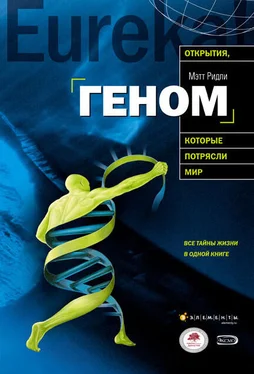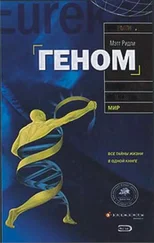Hamilton W. D. 1995. Narrow roads of gene land . Vol. 1. W. H. Freeman, Basingstoke.
Пример взят из статьи Susan Blackmore. 1997. The power of the meme meme. Skeptic Vol. 5, № 2, p. 45.
Kazazian H. H., Moran J. V. 1998. The impact of L1 retrotransposones on the human genome. Nature Genetics 19: 19–24.
Casane D. et al. 1997. Mutation pattern variation among regions of the primate genome. Journal of Molecular Evolution 45: 216–226.
Doolittle W. F., Sapienza C. 1980. Selfish genes, the phenotype paradigm and genome evolution. Nature 284: 601–603;
Orgel I. E., Crick F. H. C. 1980. Selfish DNA: the ultimate parasite. Nature 284: 604–607.
McClintock B. 1951. Chromosome organisation and genetic expression. Cold Spring Harbor Symposia on Quantitative Biology 16: 13–47.
Yoder J. A. et al. 1997. Cytosine methylation and the ecology of intragenomic parasites. Trends in Genetics 13: 335–340.
Jeffreys A. J. et al. 1985. Hypervariable ‘minisatellite’ regions in human DNA. Nature 314: 67–73.
Reilly P. R., Page D. C. 1998. We’re off to see the genome. Nature Genetics 20: 15–17.
Ridrey M. 1993. The Red Queen: sex and the evolution of human nature . Viking, London.
Crow J. F. 1993. Felix Bernstein and the first human marker locus. Genetics 133: 4–7.
Yamomoto F. et al. 1990. Molecular genetic basis of the histo-blood group ABO system. Nature 345: 229–233.
Dean A. M. 1998. The molecular anatomy of the ancient adaptive event. American Scientist 86: 26–37.
Gilbert S. C. et al. 1998. Association of malaria parasite population structure, HLA and immunological antagonism. Science 279: 1173–1177.
Pier. G. B. et al. 1998. Salmonella typhi uses CFTR to enter intestinal epithelial cells. Nature 393: 79–82.
Hill A. V. S. 1996. Genetics of infectious disease resistance. Current Opinion in Genetics and Development 6: 348–353.
Ridley M. 1997. Diseases . Phoenix, London.
Cavalli-Sforza L. L., Cavalli-Sforza F. 1995. The great human diasporas . Addison Wesley, Reading, Massachusetts.
Wederkind C., Füri S. 1997. Body odour preferences in men and women: do they aim for specific MHC combinations or simply heterogeneity? Proceedings of the Royal Society of London, Series B 264: 1471–1479.
Hamilton W. D. 1990. Memes of Haldane and Jayakar in a theory of sex. Journal of Genetics 69: 17–32.
Martin P. 1997. The sickening mind: brain, immunity and disease . Harper Collins, London.
Becker J. B. et al. 1992. Behavioral endocrinology . MIT Press, Cambridge, Massachusetts.
Marmot et al. 1991. Health inequalities among British civil servants: the Whitehall II study. Lancet 337: 1387–1393.
Sapolsky R. M. 1997. The trouble with testosterone and other essays on the biology of the human predicament . Touchstone Press, New York.
Folstad I., Karter A. J. 1992. Parasites, bright males and the immunocompetence handicap. American Naturalist 139: 603–622.
Zuk M. 1992. The role of parasites in sexual selection: current evidence and future directions. Advances in the Study of Behaviour 21: 39–68.
Hamer D., Copeland P. 1998. Living with our genes . Doubleday, New York.
Efran J. S., Greene M. A., Gordon D. E. 1998. Lessons of the new genetics. Family Therapy Networker 22: 26–41.
Kagan J. 1994. Galen’s prophesy: temperament in human nature . Basic Books, New York.
Wurtman R. J., Wurtman J. J. 1994. Carbohydrates and depression. In: Masters R. D., McGuire M. T. (eds), The neurotransmitter revolution , p. 96–109. Southern Illinois University Press, Carbondale and Edwardsville.
Kaplan J. R. et al. 1996. Influence of dietary lipids on agonistic and affiliative behavior in Macaca fascicularis. American Journal of Primatology 38: 333–347.
Raleigh M. J., McGuire M. T. 1994. Serotonin, aggression and violence in vervet monkeys. In: Masters R. D., McGuire M. T. (eds), The neurotransmitter revolution , p. 129–145. Southern Illinois University Press, Carbondale and Edwardsville.
Bateson W. 1894. Materials for the study of variation . Macmillan, London.
Tautz D., Schmid K. J. 1998. From genes to individuals: developmental genes and the generation of the phenotype. Philosophical Transactions of the Royal Society of London, Series B 353: 231–240.
Nüsslein-Volhard J., Wieschaus E. 1980. Mutations affecting segment number and polarity in Drosophila . Nature 287: 795–801.
McGinnis et al. 1984. A homologous protein coding sequence in Drosophila homeotic genes and its conservation in other metazoans. Cell 37: 403–408;
Scott M., Weiner A. J. 1984. Structural relationships among genes that control development: sequence homology between the Antennapedia , Ultrabithorax , and fushi tarazu loci of Drosophila . Proceedings of the National Academy of Science of the USA 81: 4115–4119.
Arendt D., Nubler-Jung K. 1994. Inversion of the dorso-ventral axis? Nature 371: 26.
Sharman A. C., Brand M. 1998. Evolution and homology of the nervous system: cross-phylum rescues of otd / Otx genes. Trends in Genetics 14: 211–214.
Duboule D. 1995. Vertebrate hox genes and proliferation — an alternative pathway to homeosis. Current Opinion in Genetics and Development 5: 525–528;
Krumlauf R. 1995. Hox genes in vertebrate development. Cell 78: 191–201.
Zimmer C. 1998. At the water’s edge . Free Press, New York.
Cavalli-Sforza L. 1998. The DNA revolution in population genetics. Trends in Genetics 14: 60–65.
Jensen M. 1998. All about Adam. New Scientist , 11 July: 35–39.
Сведения приводились в Интернет-издании HMS Beagle: The Biomednet Magazine , www.biomednet.com/hmsbeagle, issue 20, November 1997.
Holden C., Mace R. 1997. Phylogenetic analysis of the evolution of lactose digestion in adults. Human Biology 69: 605–628.
Читать дальше
Конец ознакомительного отрывка
Купить книгу





![Twelve Angel - Супер Ген Бога. Том 13 [1201-1300 главы]](/books/408699/twelve-angel-super-gen-boga-tom-13-1201-thumb.webp)
![Twelve Angel - Супер Ген Бога. Том 12 [1101-1200 главы]](/books/408700/twelve-angel-super-gen-boga-tom-12-1101-thumb.webp)
![Twelve Angel - Супер Ген Бога. Том 11 [1001-1100 главы]](/books/408701/twelve-angel-super-gen-boga-tom-11-1001-thumb.webp)
![Twelve Angel - Супер Ген Бога. Том 10 [901-1000 главы]](/books/408702/twelve-angel-super-gen-boga-tom-10-901-thumb.webp)
![Twelve Angel - Супер Ген Бога. Том 9 [801-900 главы]](/books/408703/twelve-angel-super-gen-boga-tom-9-801-900-glavy-thumb.webp)
![Twelve Winged Dark Burning Angel - Супер Ген Бога. Том 2 [101-200 главы]](/books/412125/twelve-winged-dark-burning-angel-super-gen-boga-tom-2-101-200-glavy-thumb.webp)
![Twelve Winged Dark Burning Angel - Супер Ген Бога. Том 1 [1-100 главы]](/books/412126/twelve-winged-dark-burning-angel-super-gen-boga-tom-1-1-100-glavy-thumb.webp)
